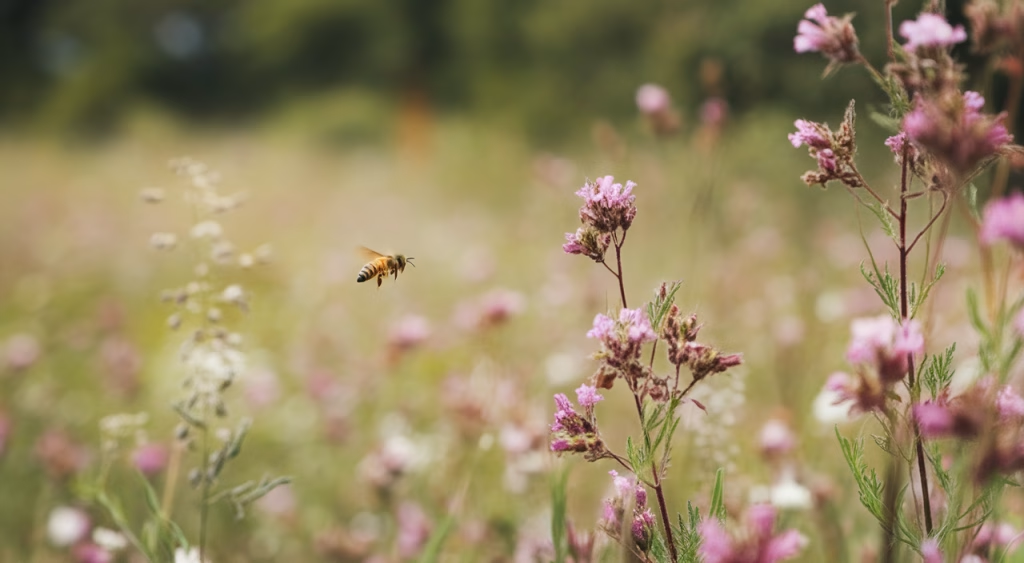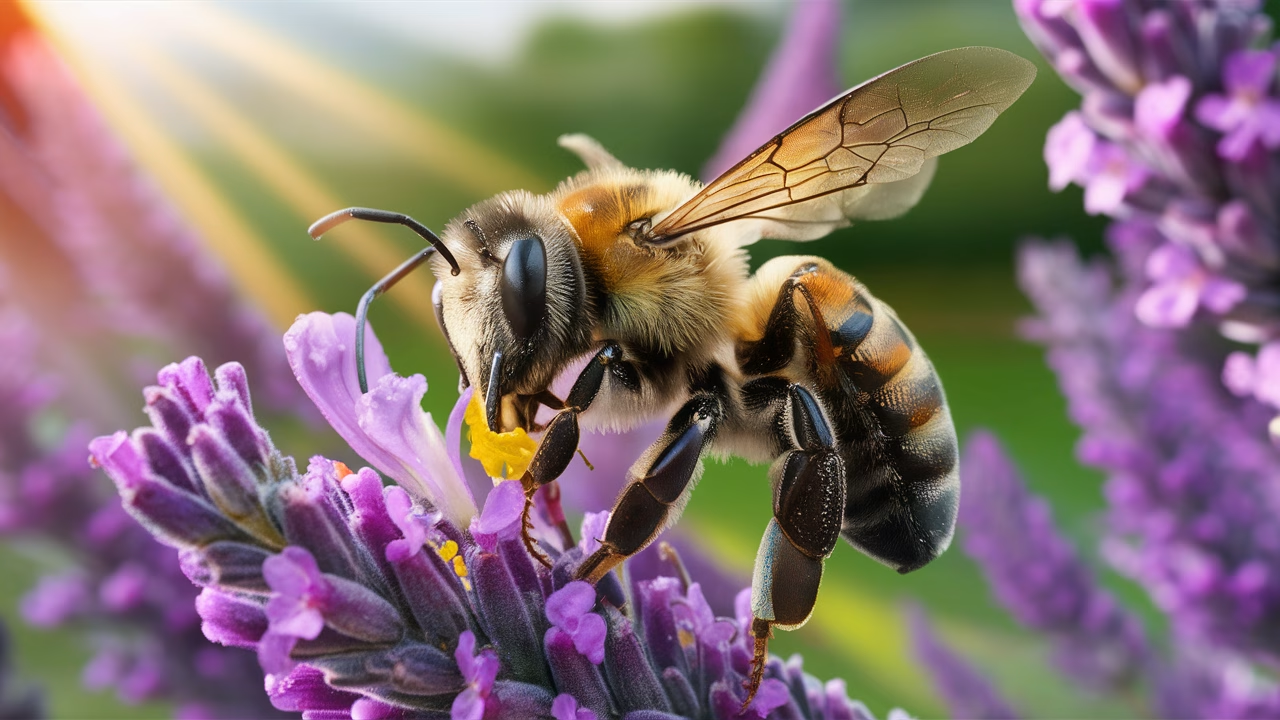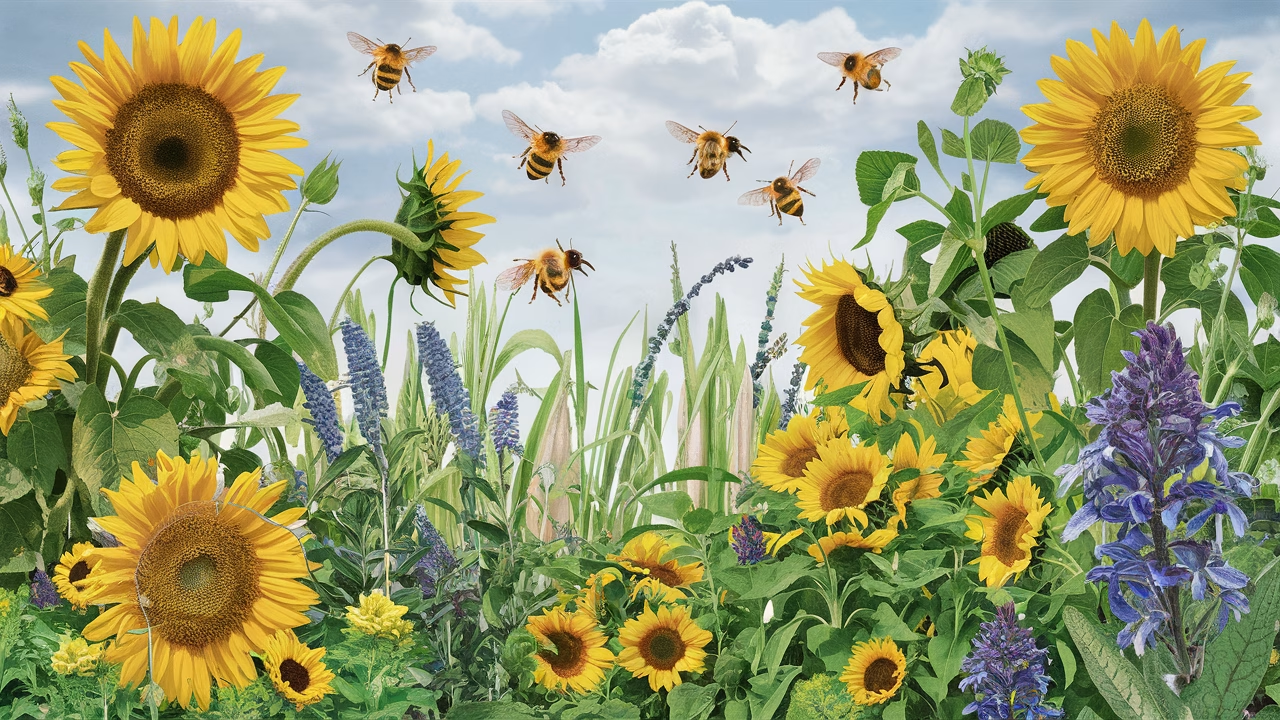Why Do Honeybees Visit 50–100 Flowers in One Trip?
It might seem excessive, but there’s a master plan at work. A single honeybee visits upwards of 50 to 100 flowers per collection trip not just for nectar—but to gather pollen, support the hive, and fuel natural ecosystems through pollination. This seemingly tireless behavior isn’t random; it’s a well-coordinated routine deeply embedded in nature’s machinery.
TL;DR: The Honeybee’s Multi-Flower Flight Path
- Honeybees visit 50–100 flowers during one collection trip to maximize efficiency and minimize return trips to the hive.
- Worker bees use visual and olfactory cues—like bright markings and strong smells—to locate the flowers with the richest rewards.
- Each trip supports pollination, which in turn keeps ecosystems—and agriculture—flourishing.
- Honeybees are picky—they favor certain flower types for nectar quality and accessibility.
The Role of Worker Bees in Collection Trips
Why are worker bees the ultimate multitaskers?
In every bustling hive, it’s the female worker bees who take on the daunting task of foraging. From about 3 weeks of age, these dedicated worker bees graduate from hive chores to fieldwork. Each forager meticulously ventures out to gather nectar, pollen, propolis, and even water—returning home with their bounty stored in the ‘honey stomach’ or dusted onto bristly hind legs called corbiculae (or pollen baskets).
They’re more than just collectors. These worker bees rely on memory and solar positioning to navigate, utilizing encoded dances when they return to the hive to direct their sisters toward rich floral zones—a phenomenon called the waggle dance.
Here’s what often happens: a worker bee will zip through a meadow, darting strategically between blooming plants that match her target flower species for the day. She’s calculated, efficient, and always results-driven.
How Flowers Attract Bees with Bright Markings and Strong Smells
How do flowers lure in a honeybee?
Think of petals as neon signs for bees—and it’s not an exaggeration. Flowers flaunt ultraviolet nectar guides (markings invisible to human eyes) that resemble airport landing strips for bees. Add to that rich, distinct smells, and you’ve got a botanical billboard that says, “Free nectar here!”
Flowers deploy both visual and olfactory cues through their distinctive flower markings. The brighter and more fragrant a bloom, the more enticing it is to a honeybee. These flower markings ensure pollinators carry pollen from plant to plant, aiding reproduction. Bees are evolutionarily adapted to recognize and respond to these cues—forming loyal floral preferences and even avoiding previously depleted flowers. That’s efficient foraging behavior in action.
The Importance of Pollination in Ecosystems
What does this mean for us—and the planet?
Pollination isn’t just a garden bonus. It underpins food chains and supports climate resilience. When a honeybee brushes past a flower’s anthers and pistil during her collection trip, she’s not just on a nectar run—she’s facilitating genetic exchange that allows plants to bear fruit and seeds.
Roughly 75% of the world’s food crops depend on pollinators like the honeybee. No bees? That means reduced yields for apples, almonds, pumpkins, and dozens more essential foods. For ecosystems, pollination encourages biodiversity—helping native plant species flourish and providing habitat for other animals. So, every one of those 50–100 flowers a bee visits matters more than you might guess.
Types of Flowers Preferred by Honeybees
What flower traits do honeybees go for?
Here’s a tip for gardeners and beekeepers alike: not all flowers are created equal in the eyes (or antennae) of a honeybee. During their collection trips, bees seek out high-nectar plants with accessible pollen. Native and heirloom varieties are incredibly attractive because they retain open, shallow shapes that allow worker bees to reach nectar with ease.
| Type of Flower | Main Appeal |
|---|---|
| Lavender | Strong scent and abundant nectar |
| Sunflowers | Wide landing platform and high pollen |
| Clover | Rich nectar, easy blossom structure |
| Borage | Refills nectar quickly, blue hue appeal |
| Bee Balm | Fragrant and bright floral tubes |
When you plant these in your garden, you offer bees a reliable buffet. Try clustering the same type of flower in groups; honeybees often stick to one species per trip, which increases pollination success.
Impact of Declining Bee Populations
Why should you care about bee loss?
If bees vanish, we lose much more than honey. Habitat destruction, pesticide use, and climate change are causing massive losses in bee populations. This threatens food security and ecosystem health globally.
Without honeybees making their essential collection trips, human agriculture would need to rely on manual pollination—an inefficient and costly alternative. That’s why many countries consider bees essential to national food strategies. So supporting bee-friendly practices—from reducing pesticide use to planting wildflowers—means protecting more than just the hive.
Final Thoughts
So next time you see a honeybee drifting from bloom to bloom, consider what you’re witnessing: a miracle of biology and teamwork that links your afternoon snack to a thriving ecosystem. Whether you’re just getting into beekeeping or simply curious about their behavior, understanding the honeybee’s floral journey helps us appreciate and protect one of nature’s tiniest heroes.
Frequently Asked Questions
How many flowers does a honeybee visit in one day?
On average, a single foraging honeybee can visit 1,000 to 1,500 flowers in a single day, sometimes even more depending on weather and floral resources.
What drives bees to choose specific flowers?
Honeybees are drawn to flowers with easy-to-access nectar, strong smells, UV-visible patterns, and bright colors—especially blue, violet, and yellow.
Do all bees do collection trips?
No, only worker bees leave the hive to forage. Drones and queens remain hive-bound for reproduction and colony leadership.
Honeybees use an internal sun compass, memory, and scent trails for easy navigation and bloom recollection.
What can I plant to help honeybees?
Try lavender, clover, sunflowers, or borage—plants rich in nectar and accessible pollen. Group them in clusters for best results.
Can honeybees pollinate all types of plants?
Not all. While they’re generalists, honeybees are more effective on some crops than others. Specialized native bees pollinate flowers with more complex shapes.
Why is pollination decreasing globally?
Loss of habitat, use of pesticides, monocrops, and climate change all contribute to reduced pollinator activity.





